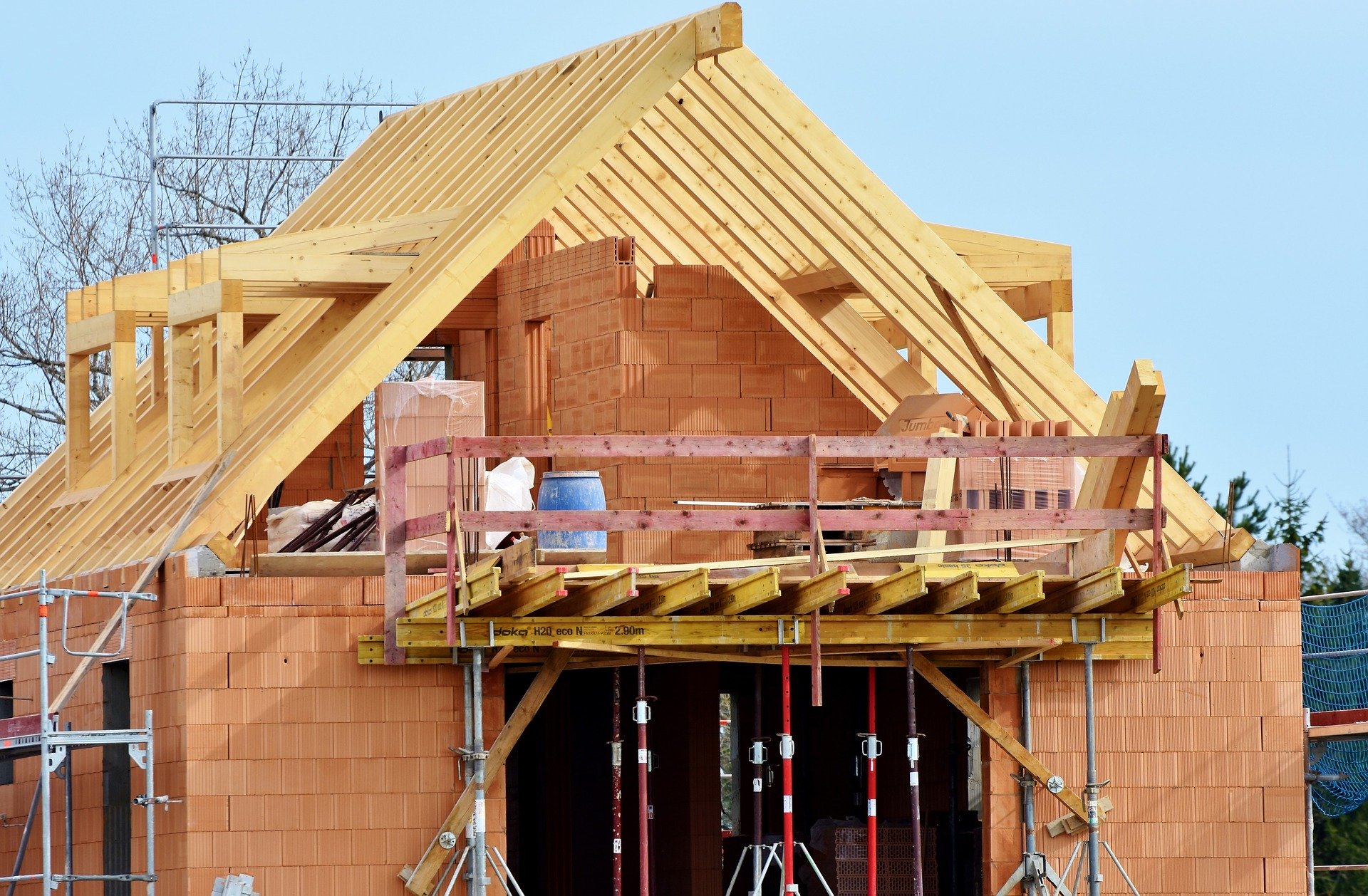A Guide To: Buying a New Build Home
Purchasing a new build property can be a daunting prospect if you are unfamiliar with the process. That’s why we have created a guide to help identify the steps you will take, as well as useful things to consider, to ensure that you successfully purchase your dream home.
- Find the Developers building properties in your desired area – make sure that you thoroughly research and read any relevant reviews for these Developers. This will be particularly important if you are purchasing a property that is yet to be built or in an area that you are not familiar with.
- Visit the New Build site or contact the Developer and find the home (or style of home) that you wish to buy.
- Contact our Client Service Advisors for an estimate of conveyancing costs.
- Once Tinsdills has been instructed, we will issue you with a Client Care Pack which includes our Terms of Business, a request for proof of identity and payment on account for searches. You will need to sign and return the Terms of Business and provide the requested information to enable us to start work on your purchase.
- You may have to pay a reservation fee to the Developers’ sales office in order to secure the property (this will usually only secure the property for 28 days). This reservation fee may not be refundable and you should consider the terms of any reservation agreement that you are asked to sign very carefully. The Developer will also perform their financial checks at this stage such as a credit check and ensuring that you have a mortgage offer in principle. At this stage you should consider whether you wish to use (and let the Developer know if so) the Help to Buy Equity Loan Scheme or the Shared Ownership Scheme, if applicable. Please see our article regarding the Help to Buy Loan here.
- The Developer will send your solicitor the Reservation Form so that they can move forward with your purchase.
- If you are having a mortgage, you should now apply to your chosen lender with the property details. (You will probably have a mortgage promise already at this point as this is necessary for most Reservation Forms). If you are using the Help to Buy Loan Scheme, they will need to authorise your mortgage offer.
- Your mortgage lender should arrange a valuation survey for the property. If you are buying a property yet to be built, they will use the plans and specifications in order to do this.
- The Developer will send your solicitor a Contract pack, together with all of the necessary information for the property. Your solicitor will raise any enquiries necessary at this stage.
- Tinsdills will order the searches to be undertaken on the property. Searches are compulsory if you are having a mortgage. They are advisable on a cash purchase also, but not compulsory. Your solicitor will review the search results and again send any enquiries necessary to the Developer.
- When you receive your formal mortgage offer, your solicitor should receive their copy at the same time. Your solicitor will draft the final completion statement and include details of any charges and payments required. These will include any additional payments that you have agreed with the Developer and the Developer will send your solicitor their financial Completion Statement. At this point your solicitor will advise the lender of any 3rd party payments’ (e.g. gifted deposit) and discuss with you if a co-ownership agreement is needed.
- Once Tinsdills receive all search results, your mortgage offer and replies to any enquiries raised, your solicitor will prepare a Purchase Report for you.
- Tinsdills will send you the Purchase Report, the Completion Statement, and any documents you may not have seen as yet. You will also be asked to make an appointment to see your solicitor to discuss the matter in detail, sign the documents required, discuss payment details for the deposit/balance due and finally, advise you of the completion date that the Developer expects to achieve. When exchanging Contracts on a New Build property, your solicitor will often do this with the Completion date ‘on notice’. This means that after exchange, your solicitor will wait to be informed that the property is ready in order to progress to legal Completion. There will usually be a timescale for this within the contract.
- Once Tinsdills are in receipt of deposit funds from you, Contracts will be exchanged and your solicitor will send the deposit onto the Developer. As mentioned at stage 2, the property is usually held for 28 days with the reservation fee. This means that Contract exchange must happen before this period finishes in order to ensure the property is secured. This is something to consider if you need some time in order to access your funds etc. The Developer may well extend the period for which the property is held and Tinsdills can assist in negotiating this for you.
- If your solicitor has exchanged contracts for completion ‘on notice’, when the property is physically complete, it will be inspected by the NHBC or other structural provider and your solicitor will be served with a notice providing a period of time, usually between 7-10 days to complete. You will be asked to complete your pre occupation inspection at this stage. It is very important that you inspect the property thoroughly; you will not be able to refuse to complete and/or retain any sums of money if the property is finished to your satisfaction at the end of the notice period.
- Tinsdills will request the mortgage funds from your lender once there is a fixed Completion date – they usually require 5 working days notice. Any final balance due from you will also be requested at this time. If you are using the Help to Buy Loan Scheme, your solicitor will also request funds from them at this time. If you have a Help to Buy ISA, your solicitor will also request the relevant bonus.
- Completion Day – Your solicitor will send the purchase price to the Developer by bank transfer. Once received by them, they will release the keys and you will be informed at that time by telephone. They will also provide you with any relevant paperwork for the site and any contents at this stage (or just after). This should include any guarantees and manuals.
- After completion, your solicitor will arrange payment of your stamp duty (if required) and also apply to HM Land Registry to register the property in your name. Once this is finalised, you will receive a copy of your Title Information Document from your solicitor and your lender will also receive a copy. This process may take slightly longer for a newly built property as the property will not have been registered previously.
Things to Consider
- Make a Snagging List
Walk around your new home (if you are able) and identify anything that you don’t think has been completed to a satisfactory standard. These could include defects with fixtures and fittings or additional items that you paid for that have not been installed correctly, or even at all. The ideal time to make this list would be before Completion (and after Contract exchange if possible) but making sure you do this as soon as possible is advisable. These issues can then be fixed prior to Completion leaving less possibility of disputes about liability for the issues. A good way to avoid these issues would be to take a photo with a timestamp in order to show when the defect/issue was present.
- Warranty
With all New Build properties, the Developer provides a warranty; this may be an NHBC certificate, Architects certificate or some other guarantee. You should familiarise yourself with the limited scope of these guarantees. - Possibility for further development
Consider whether any possible further development of the site after the current stage has been completed will affect your enjoyment of the property or its value. Speak to the Developer about any future plans they may have, a good indicator of this may be any land adjoining the development that is left undeveloped. This may not be something that you will receive an answer for, but is still something to consider. - Site Visit
Visit the current and past sites for the Developer. This will give you an idea about the final property that you will be purchasing and its specifications, but will also give you a feel of the overall development. It will also allow you to see things such as access routes and new roads in person. - Leasehold v Freehold
Consider whether you wish to purchase a freehold or leasehold property. If you are looking at a leasehold property, you will need to be aware of what is contained within the lease and any restrictions placed on the property. This is something that you will be made aware of within your Purchaser’s Report. - Long-Stop Dates
Long-Stop dates are put in place by the Developer to set a final deadline for completion of the development of your property. If this deadline is not reached, you will be owed money by the Developer for the duration that the property is not completed beyond the deadline. Having a clear Long-Stop date in place with the Developer from the beginning ensures that you are aware of the timescales involved with your property allowing you to plan ahead and make any necessary arrangements. Always ask what the Long-Stop date affecting your property is.
Contact our team today for further advice and guidance on the purchase of a new build property.




